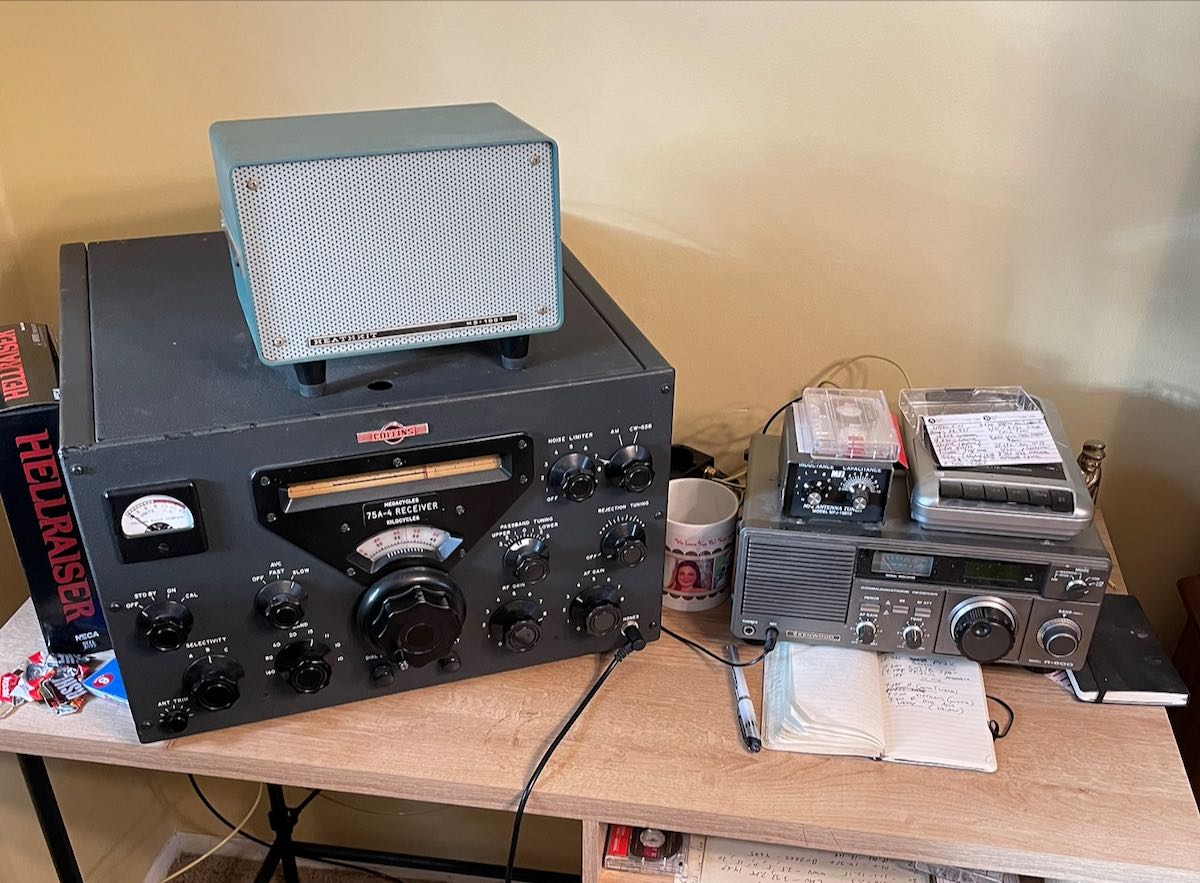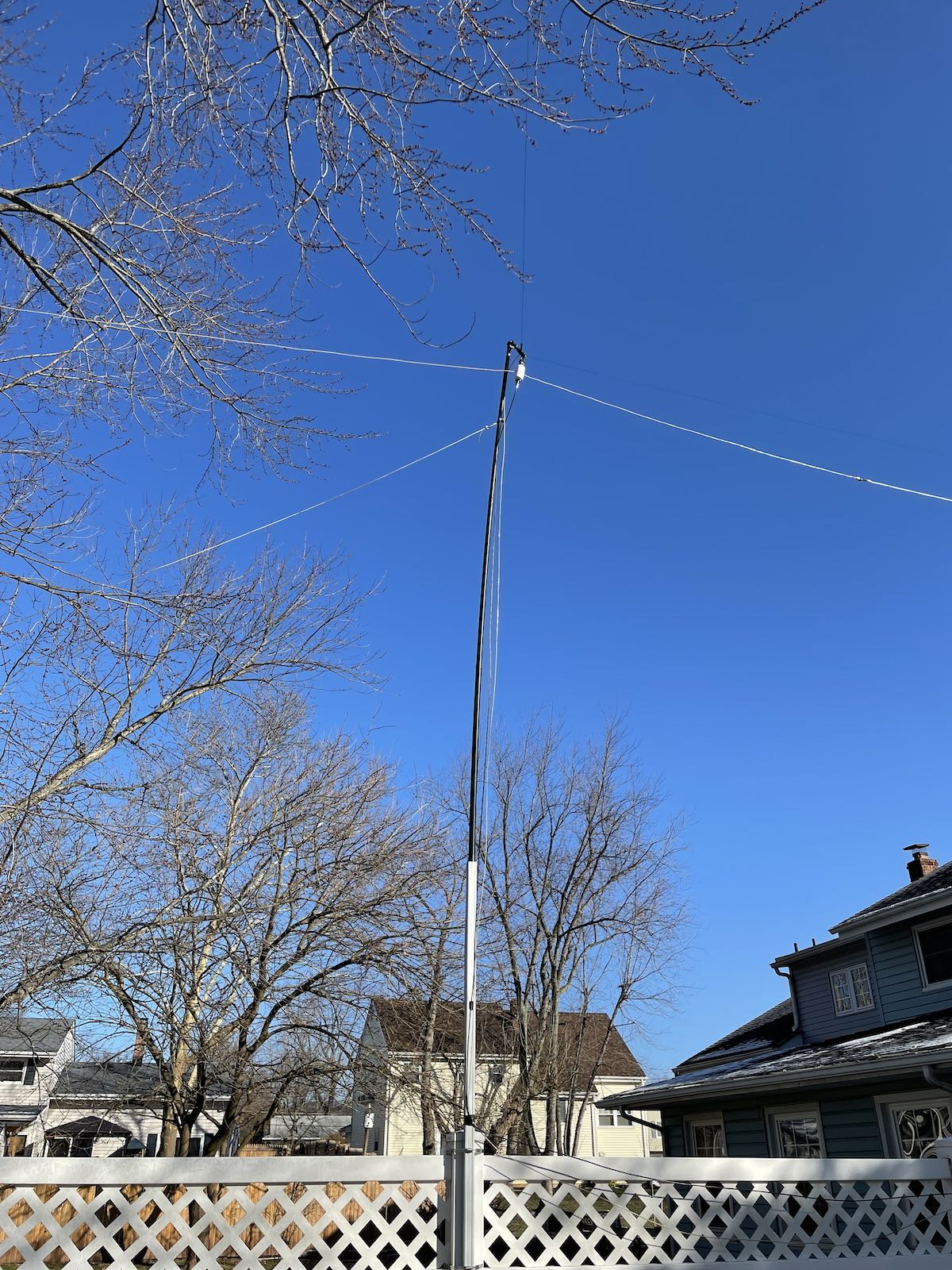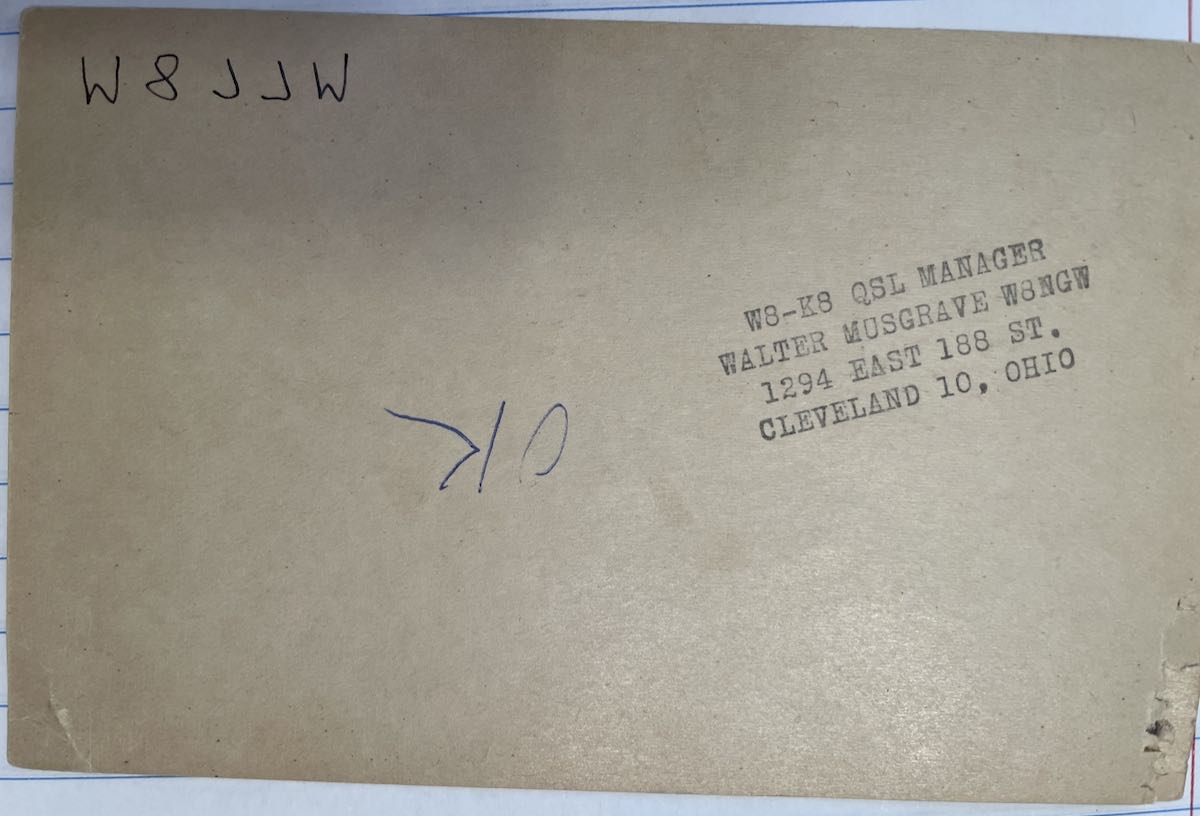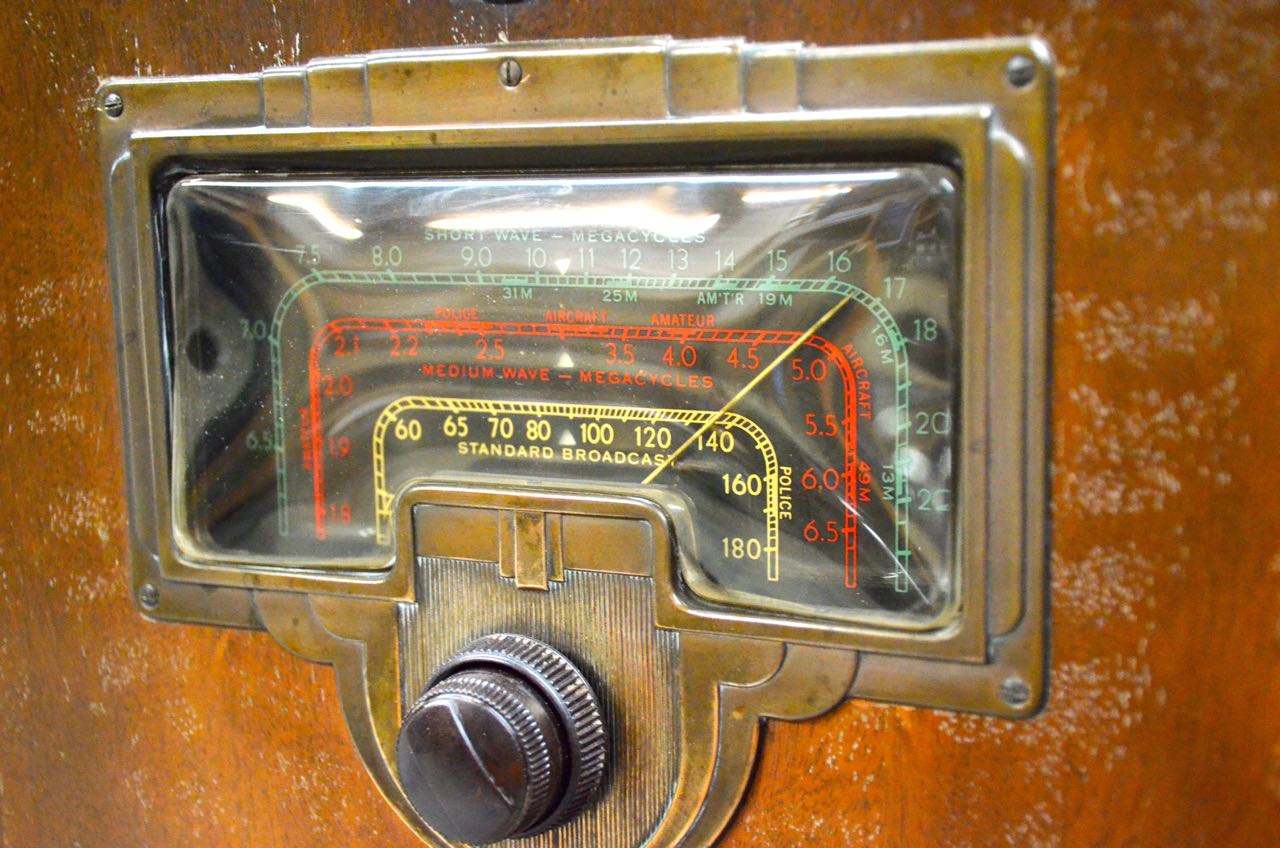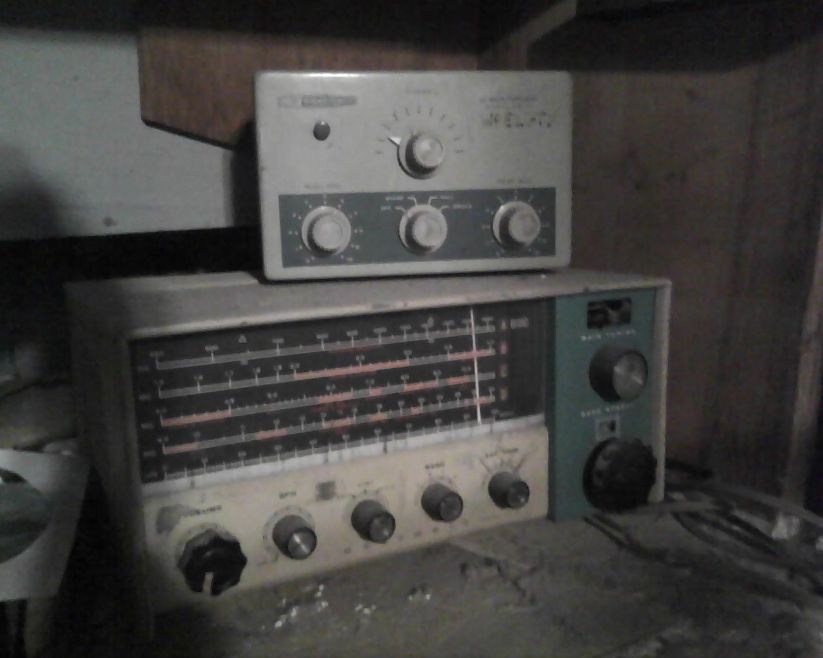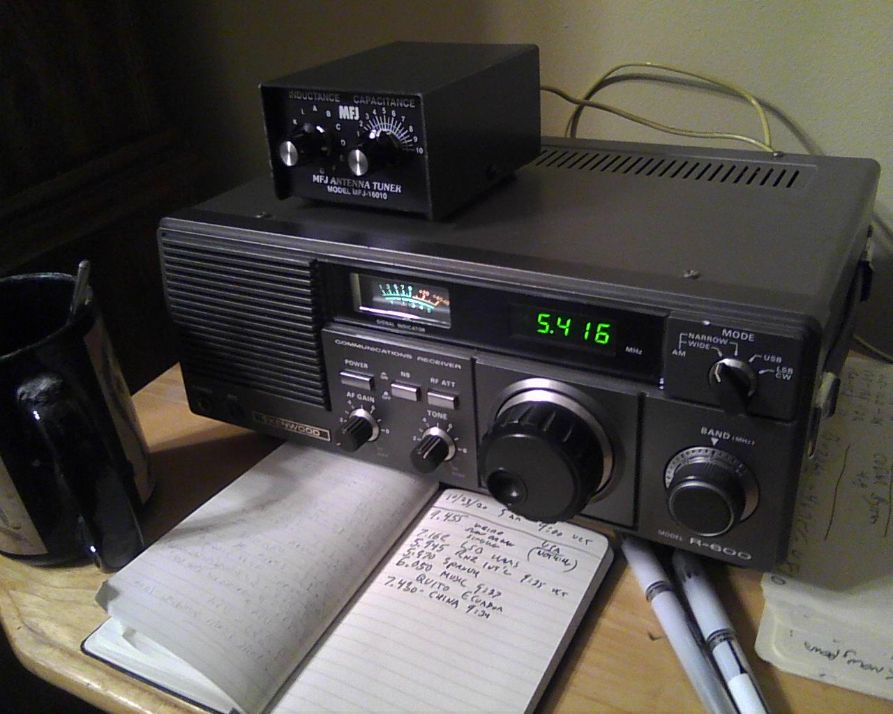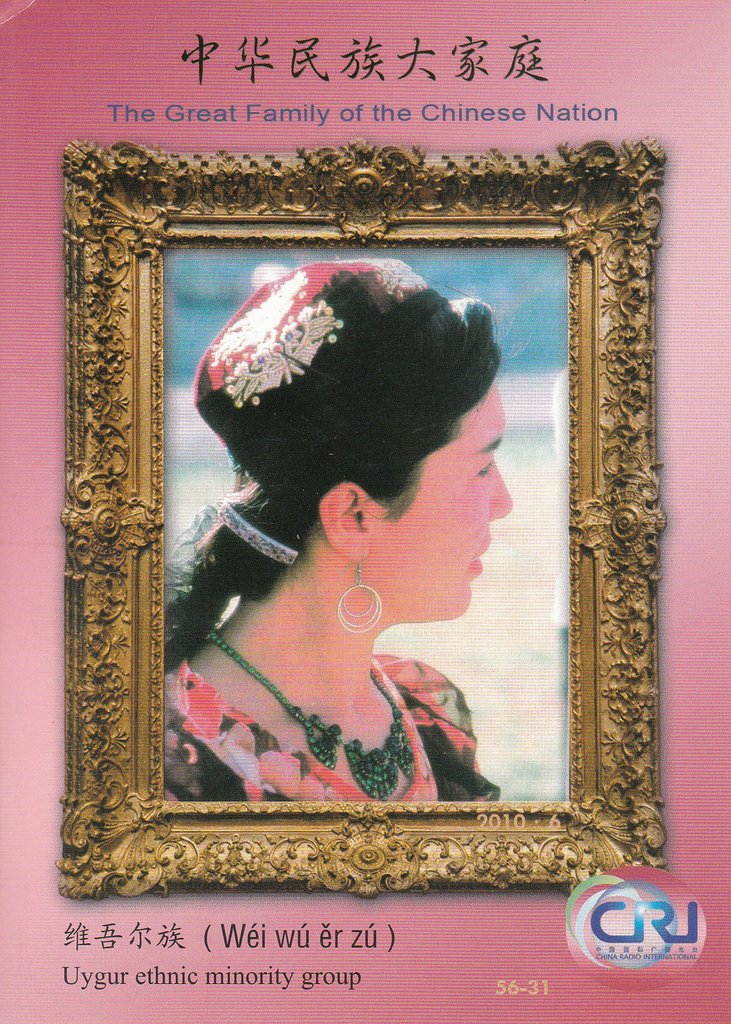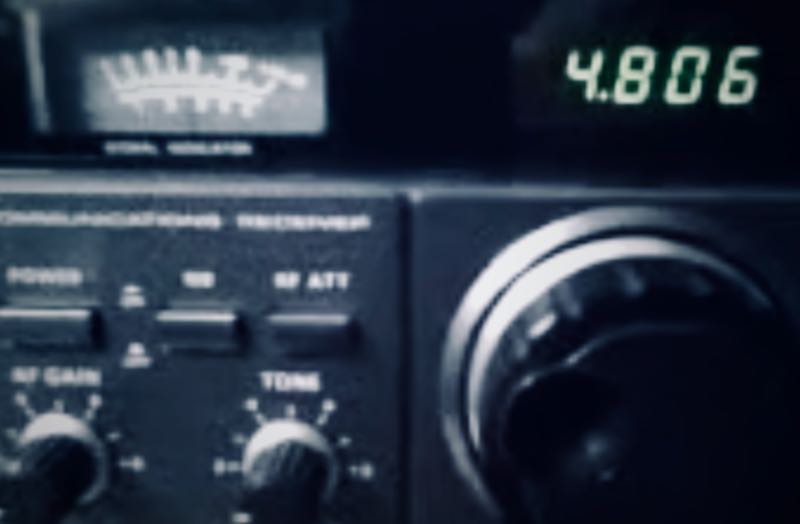Many thanks to SWLing Post contributor, Jim Meirose, who recently shared a few photos and writes:
This is the equipment currently in use here in Somerville, NJ. The Collins 75A-4 is a recent acquisition. This radio is used to cover all amateur bands. The other is the Kenwood R-600, for general coverage up to 30 MHz. The Collins has proven to be a wise purchase, as I can hear both ends of almost any SSB QSO picked up on any band. The Collins is sensitive enough to be able to even pull in signals from bands which real-time band condition maps say are nearly or totally dead at the time.
Comparison of the Kenwood to the Collins on ham bands has shown nearly an even match; but, the Collins can sometimes detect weak amateur signals that the Kenwood can’t (using the same antenna) and totally beats the Kenwood for clarity of SSB audio. The Kenwood has much better audio quality on AM, however.
Both radios are very easy to use. Before using a 75A-4, however, study the manual to set up the controls, because there are some odd (non-intuitive) quirks to know to get the set to work properly.
The antennas here are a 150′ long wire, which works well on all frequencies. A 15 meter half-wave dipole was put up to get the most from the Collins on that band. A 10 meter dipole will soon be put up also. For ham bands 20 meters and lower the long wire does the job. For convenience’s sake, I have the 15 meter antenna and the long wire connected to the Collins all the time. But, an odd quirk; 10 meters comes in stronger with just the 15 meter dipole connected. Looking forward to see how it sounds with the 10 meter antenna.
I bought the Kenwood at the beginning of the pandemic. I knew for general coverage it would beat anything I’d used before (Heathkit and Hammarlund radios). I got the 75A-4 purely based on reviews I had read. I wanted a peak performer in the amateur bands. It has proven to be great on every ham band and under nearly any atmospheric conditions.
Regarding the Tristan Da Cunha QSL card; I find the mystique of this world’s remotest community to be fascinating. When I saw this QSL card up for sale in eBay, I grabbed it. Especially since the QSO ocurred on August 1948, when I was slightly over one month old.
Thanks for sharing this, Jim! That Collins is a thing of beauty! I would love to have one if I had the space for it! It’ll certainly keep the shack warm on cold winter nights.

